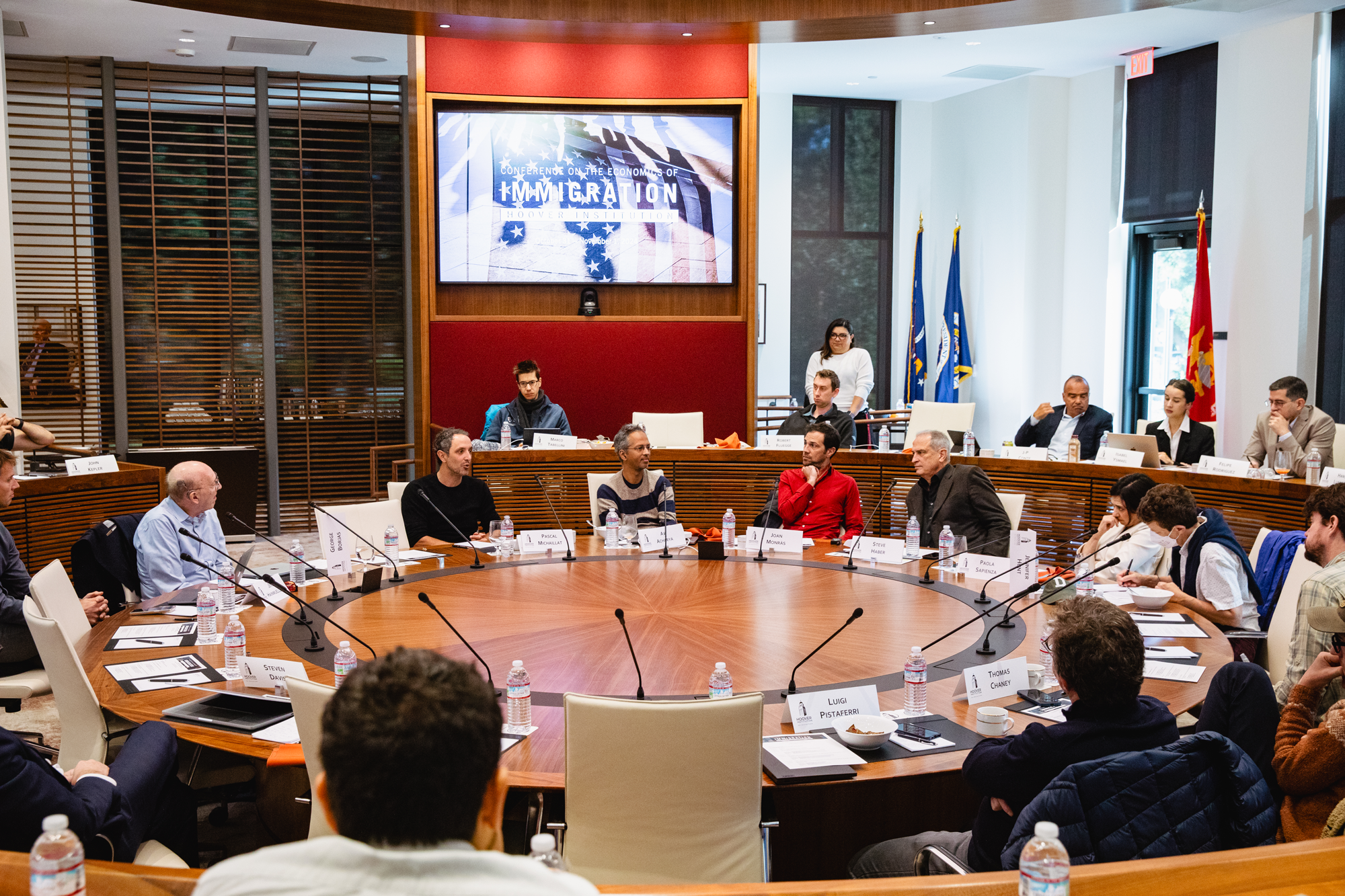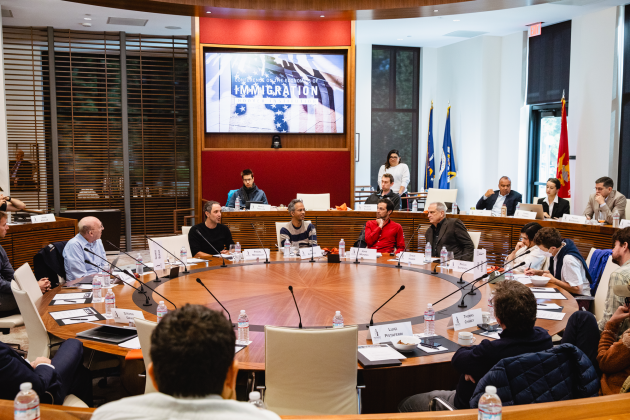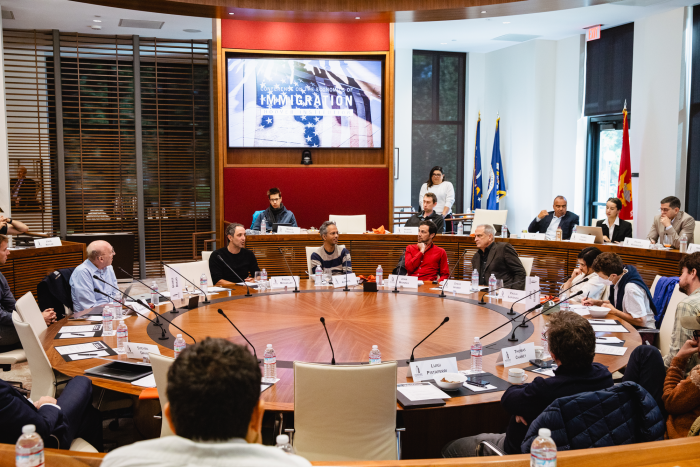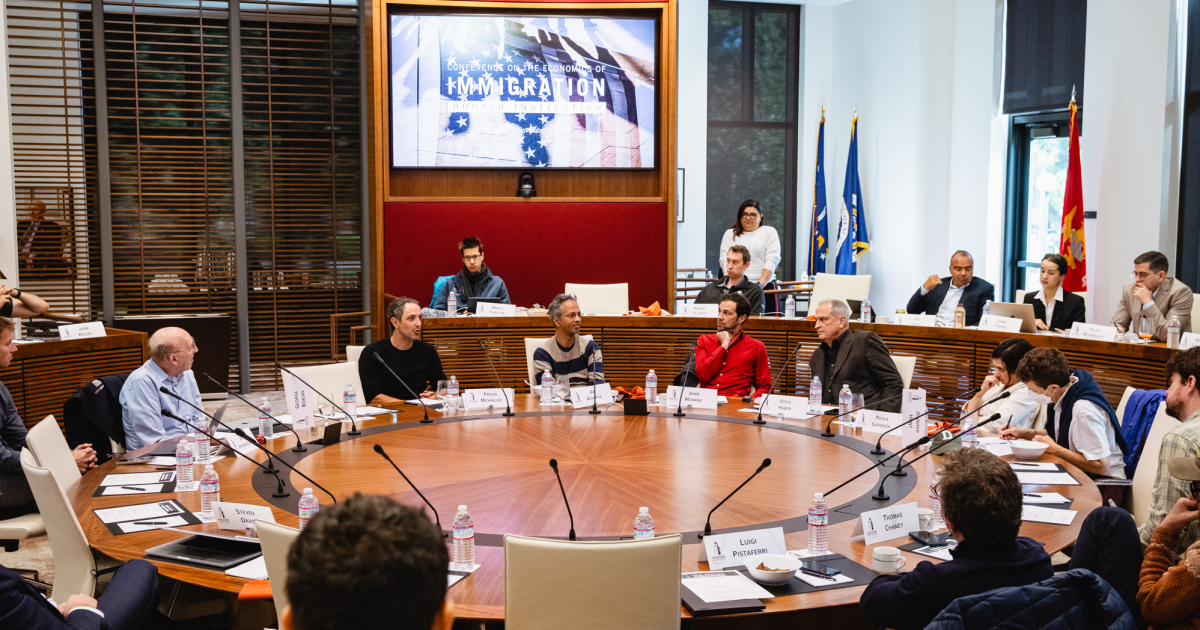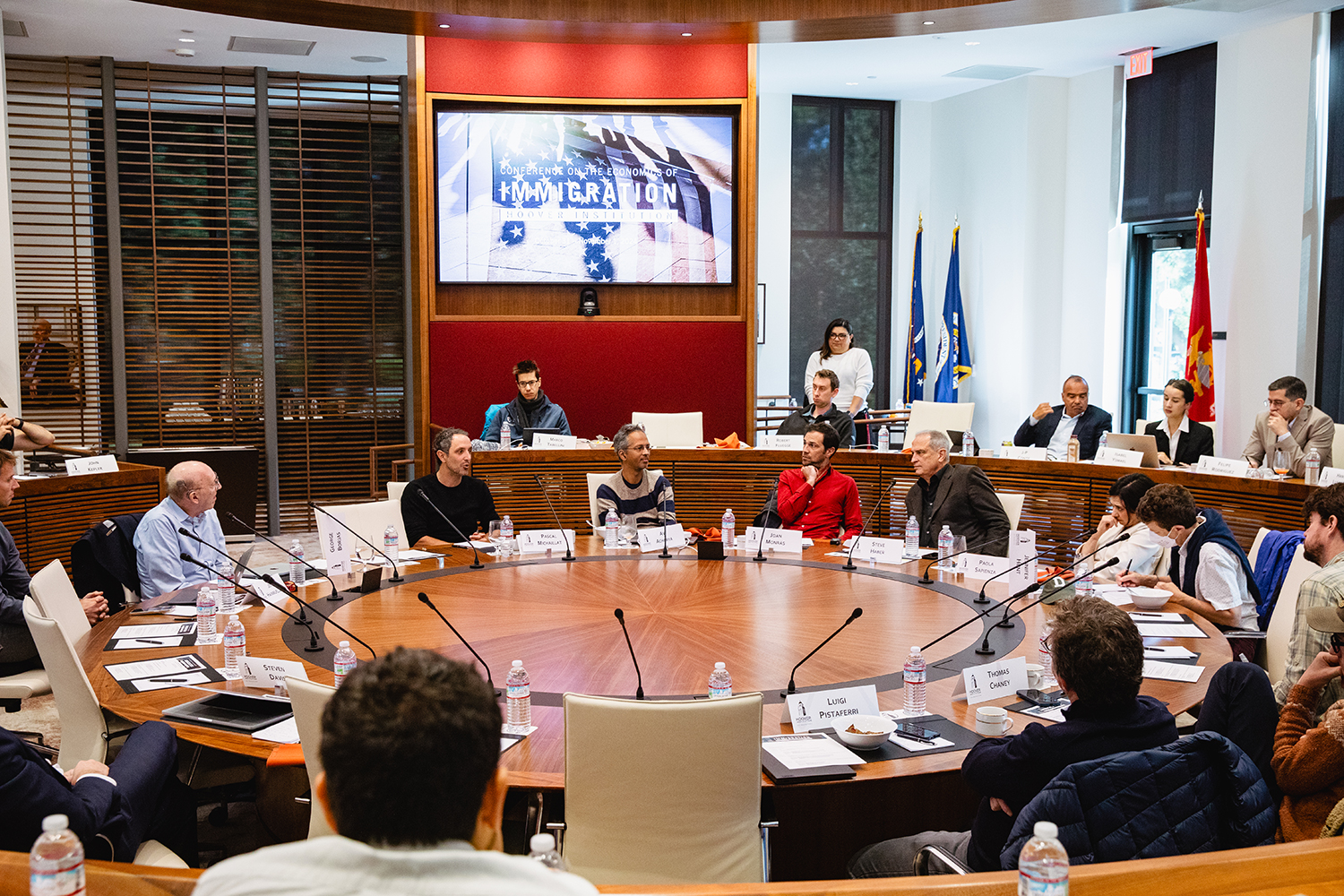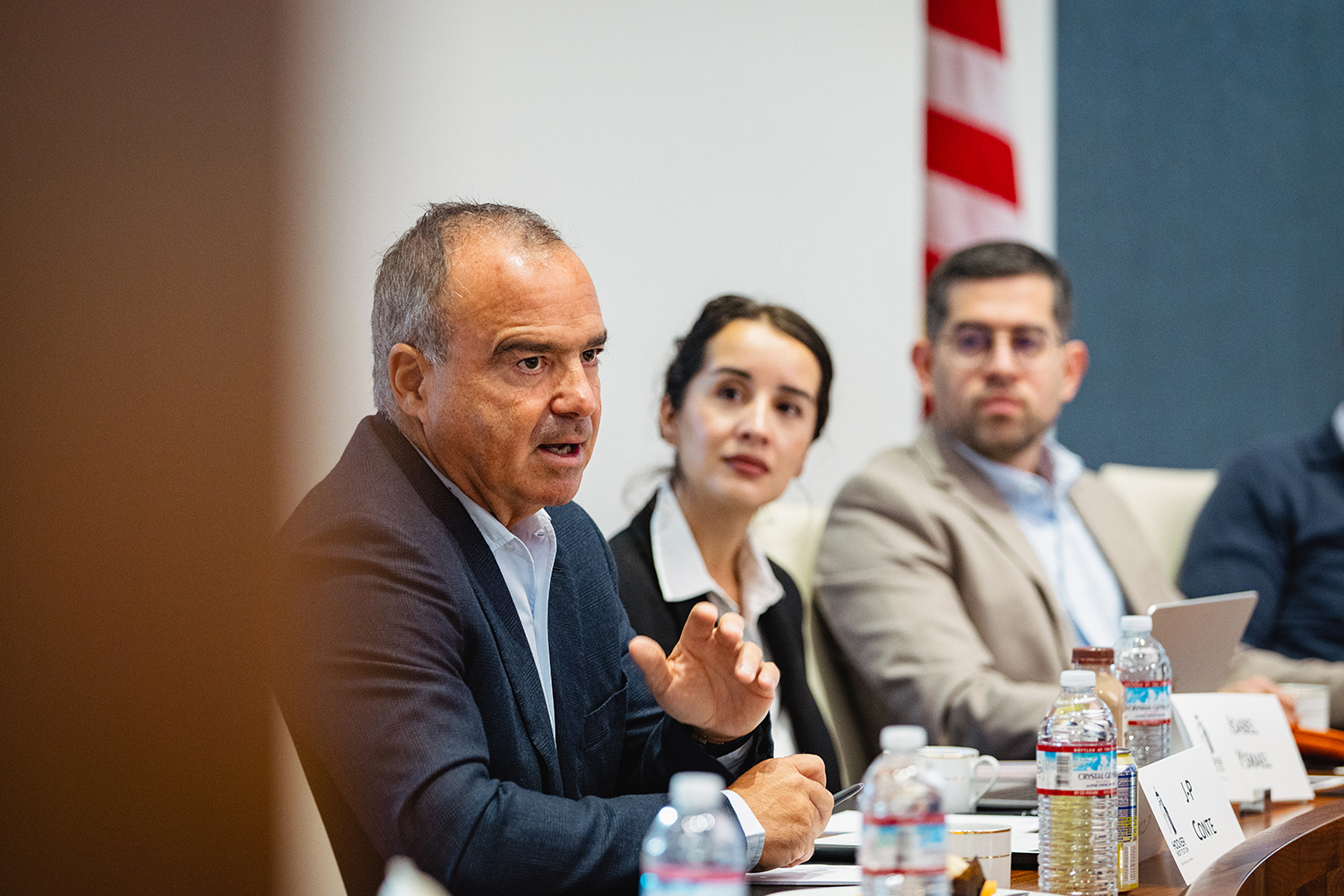Hoover Institution (Stanford, CA) — The Hoover Institution hosted its first-ever conference on the economics of immigration from October 31‒November 1, 2024, with scholars from across the globe examining the many ways immigration has made America and other nations wealthier and more innovative.
The conference was made possible by the generous support of San Francisco-based private equity executive and longtime Hoover Institution supporter Jean-Pierre Conte, whose gift established the J-P Conte Initiative on Immigration, codirected by senior fellows Paola Sapienza and Stephen Haber.
Conte, the son of immigrants from France and Cuba, said at the conference he hopes that Hoover will convene scholarship that demonstrates the extreme value and importance of immigration to the United States during a contentious moment on the issue.
“Immigration is an important economic engine for America that’s helped make our country what it is today, economically and culturally, and hopefully will continue to add to our long-term prosperity as a nation,” Conte told attendees.
Sapienza, who recently was named the J-P Conte Family Senior Fellow at Hoover and was the co-organizer of the conference along with Haber, said it will be the first of many conferences devoted to this issue.
“Immigration policy is one of the most consequential issues that the United States and the world must address in the coming years,” Sapienza said. “It intersects with critical challenges such as demographic shifts, climate-induced displacement, and conflict-driven migration. With the establishment of the J-P Conte Initiative on Immigration, the Hoover Institution will foster cutting-edge research and facilitate informed academic debates on these pressing issues.”
All the papers presented at the conference discussed the trade-offs associated with migration to the United States and other countries, both positive and negative, which include impacts to employment in local communities, increased firm profits, and contributions to innovation.
Migration's Impact on Local Unemployment
The first paper, by Pascal Michaillat from the University of California‒Santa Cruz, Modeling Migration-Induced Unemployment, sought a new method to model the impacts of migration to a locality that “allows for the possibility that not only the wages but also the unemployment rate of local workers may be affected by the arrival of newcomers.”
In the paper, Michaillat and his coauthors found several examples of influxes of new migrants increasing unemployment among locals. In some examples he cites, the impact of newcomers is marginal, such as in France after the end of the Algerian War of Independence in 1962, when every one hundred arrivals of people from Algeria displaced as many as twenty French workers out of their jobs.
In others, such as a study from Italy in 2011, every one hundred arrivals there due to instability caused by the Arab Spring led to between sixty-three and eighty Italian workers becoming unemployed.
He also cites data that the perception that migrants will “steal” locals’ jobs is pervasive, particularly in the United States.
The reality is more nuanced, as Michaillat explains in the paper. “In-migration reduces welfare when the labor market is inefficiently slack”—i.e., when unemployment is high and it is difficult for workers to find jobs—"but it enhances welfare when the labor market is inefficiently tight” —i.e., when there are more job vacancies than workers.
The Impact of Offering Amnesty
Renowned labor economist George Borjas of Harvard’s Kennedy School presented his paper, coauthored with Anthony Edo of France’s Centre d’Etudes Prospectives et d’Information Internationales (CEPII), concerning Monopsony, Efficiency, and the Regularization of Undocumented Immigrants.
Looking at a little advertised program to offer amnesty to undocumented workers in France in 1981, Borjas and Edo found significant positive effects—for immigrant workers, native-born workers, and firms—once approximately 131,000 undocumented workers received formal work authorization.
They found that employment rates and wages increased for these newly legalized workers.
The effect of the amnesty was so large that Borjas and Edo estimated it raised France’s total GDP per capita by 0.5 percent.
Borjas said the positive effects of this measure highlight the effects of monopsony, a market condition where in this case an undocumented worker (the seller) can only transact with one buyer (the employer).
The term illustrates the outsized power firms have over undocumented workers because of the control they assert over them. By legalizing these workers, the state breaks the power the firms have over them and allows them to seek other jobs with better conditions or higher wages.
Because undocumented workers fear being reported to the authorities, they accept lower pay and poorer working conditions than native-born employees. They also struggle to look for new jobs, fearing any activity that might reveal their precarious immigration status to the authorities.
Informing Today’s Approach with Data from the Period of the Chinese Exclusion Act
Next, the scholars heard from Marco Tabellini of Harvard Business School, who coauthored a paper exploring the economic impact of the Chinese Exclusion Act, which together with succeeding legislation banned the entry (or return) of Chinese nationals to the United Sates for almost sixty years.
He and his coauthors found that the law led to a 60 percent decline in the number of Chinese residents in America and a 64 percent decline in the number of Chinese nationals in the labor force.
The authors found this restriction contributed to a dampening of growth in the Western states all the way to the 1940s.
“Contrary to expectations, the Act did not benefit white and US-born workers,” the authors wrote. “The rationale behind the Act focused on economic competition between Chinese and US-born workers. But the empirical results of our study show that such competition was less important than the positive economic spillovers generated by Chinese workers.”
Contribution of High-Skill Immigrants to Innovation in the US
Moving to look at the impact of more recent, higher-skilled migrants to the United States, Rebecca Diamond of Stanford’s Graduate School of Business spoke about her paper, coauthored with four other researchers, that shows the outsized impact legal migrants have on innovation.
They found legal migrants to America are significantly overrepresented among all patent holders. Between 1990 and 2016, lawful US arrivals accounted for 10 percent of the population, 16 percent of patent holders, 23 percent of all patents approved during that time, and 25 percent of the stock market value generated by those patents.
Also, they found that the premature deaths of migrant inventors impact the teams of other inventors they were working with more significantly than the deaths of their native-born collaborators.
Immigration and its Impact on Innovation and Growth
To complete the conference, Thomas Chaney of the University of Southern California presented a paper he coauthored with four others called Immigration, Innovation, and Growth. It found a large contribution by immigration to US growth in recent decades, totaling 5 percent of US national income per capita by 2010.
The authors also found that every 10,000 additional migrants to a US county raises patenting by 25 percent in that jurisdiction. Migration to a county can also boost prevailing wages there by up to 8 percent, and up to 40 percent among college-educated residents.
Read more about the J-P Conte Initiative on Immigration here.







